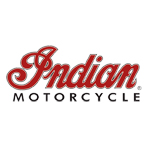
link esterni:
Indian
Motocycle Manufacturing Company
The Indian Motocycle Manufacturing Company is an American motorcycle industry founded in 1901 in Springfield, Massachusetts.
Indian is the oldest American motorcycle manufacturer and in its history it was the largest motorcycle industry in the world. The most popular models were The Scout, built until the Second World War, and The Chief, produced from 1922 to 1953.
The company was founded by George M. Hendee and Carl Oscar Hedström, both passionate cyclists, who studied and designed their first model using a a cycling frame with a 1.75 hp single-cylinder engine. The first units sold date back to 1901, a year officially recognized as the birth of the Indian.
Already in 1902 Hedstrom, riding an Indian, achieved the world speed record at 56 mph (about 90 km / h).
The brand achieved considerable success and production increased from around 500 units in 1904 to over 32,000 built in 1913, making it the leading US brand (superseded by Harley-Davidson at the end of the First World War).
In 1907 the Indian introduced the first V-twin engine was presented in order to improve performance (increase in torque and power). The company continued to collect successes and records of various kinds. In 1914 by Erwin "Cannonball" Baker crossed the United States from San Diego to New York in 11 days, 12 hours and 10 minutes.
The reputation of the Indian crosses the Atlantic thanks to sporting successes like that of the Tourist Trophy of the Isle of Man in 1911.
Also in the ten years, a new model was created, the Powerplus, again in the V configuration with side valves, sold both in the United States and abroad.
In the mid-10s the company changed profoundly with the withdrawal of the founders. Hedstrom left the company in 1913 followed by the former partner Hendee in 1916.
In the twenties the most successful Indian models are made, the Scout (smaller and cheaper) and the Chief (more expensive and equipped with a 'Big twin' engine), which share the twin V-type with 596 cm³ displacement for the first, and about 1,000 for the second.
Both quickly gained a reputation for robustness and reliability, which made them remain in the catalog of the house, with various modernizations, for about thirty years. The particular aesthetic features of these models are the large wraparound fenders and the emblem on the tank, making them easily recognizable.






